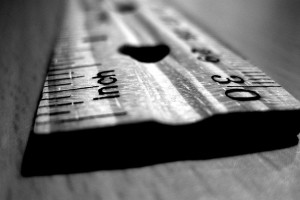Disparities In Discipline Not A New Topic, But An Important One
A number of recent events – including the deaths of two young black men in Ferguson, Mo. and New York City – are bringing discussions of race to light in a number of realms.
As it relates to education, a nationally recognized panel of experts says racial issues and stereotypes often shape the discipline practices in public schools.
The research on discipline

New research from The Equity Project at Indiana University posits that schools can in fact measure their discipline policies in black and white.
Students of color are disciplined in far greater numbers than their white peers, and often for the same type of misbehavior, according to research released last week by the Discipline Disparities Research-to-Practice Collaborative. The group of 26 social science, education and legal experts assembled three years ago through The Equity Project at Indiana University.
“Racial disparities are not easy for Americans to confront, in large part because of a long-standing reluctance to talk about issues of race and ethnicity frankly and openly,” researchers write. “But if we are to undo the racial inequities that continue to plague us, we must find constructive ways to talk about them and intervene constructively and consciously to end them.”
Federal evidence supports the idea that disparities in school discipline are only getting worse.
According to data the U.S. Department of Education’s Office of Civil Rights released in March, black students are suspended and expelled at a rate three and a half times greater than white students. On average, 5 percent of white students are suspended compared to 16 percent of black students.
OCR data also reveals that disparities begin as early as preschool. Black students make up 18 percent of preschool enrollment nationally, but represent 48 percent of the preschool children receiving more than one suspension.

U.S. Secretary of Education Arne Duncan has been involved with a number of White House initiatives to level the playing field among all students.
“It is clear that the United States has a great distance to go to meet our goal of providing opportunities for every student to succeed,” says U.S. Secretary of Education Arne Duncan.
Research says suspended students are less likely to graduate on time and more likely to be suspended again. They are also more likely to repeat a grade, drop out, and become involved in the juvenile justice system.
“Every data point represents a life impacted and a future potentially diverted or derailed,” says Attorney General Eric Holder. “This administration is moving aggressively to disrupt the school-to-prison pipeline in order to ensure that all of our young people have equal educational opportunities.”
EXTRA CREDIT: Check out this episode of This American Life, which takes a look at discipline in schools. Toggle to the story that starts at 4:23 to hear a story examining racial disparities at the very beginning – in preschool.
Discipline in the Hoosier State
Disparity in discipline policies is not a new problem in Indiana.
Indiana ties for the second highest rate of black male suspension and has the fourth highest rate of black female suspension in the nation, according to the latest federal data.
The Marion County Sheriff’s Office is in the midst of an internal investigation at Arlington High School in Indianapolis, after a student claimed his nose had been broken after a run-in with a school security officer in November. The Indianapolis Star reports that in 2012, the school handed out more suspensions in the first academic year than there were students enrolled – 518 kids, 568 suspensions. That was also more disciplinary action than any other school in the city.
Arlington’s student body is 99 percent black.
During the State Board of Education meeting in August, a handful of educators shifted the focus of the meeting by approaching the board en masse to point out disparities in their own districts. “We are not here to attack school leadership, but these concerns about discipline are real,” said Carole Craig, education spokesperson for the Greater Indianapolis NAACP branch.
“We talk about crime and children in the street, and then we wonder why the children are in the street. Students need emergency, urgent action. They need more than words of autonomy and flexibility.”
Equity Project researchers say progress toward eliminating disparities requires people acknowledge and address common issues of race that shape adult-student interactions within school walls.
Russell Skiba, a professor at Indiana University’s School of Psychology and director of The Equity Project, offers advice for schools and districts confronting the issues at the heart of racial disparities.
“The data is where we start,” Skiba says. “Once those data are available, have conversations about what that means. Could we have done something different? Can something different be done? How do we begin to develop an atmosphere where we’re willing to be self-reflective?”
Skiba says the goal of those conversations should be problem-solving, rather than pointing fingers.
“This is going to be awkward and uncomfortable and mistakes are going to be made,” Skiba acknowledges. “But educators are very good problem solvers, and once they have commitment to working on an issue, they will find creative methods that can begin to be effective on that issue.”
School districts across the country – including Los Angeles, Denver and most recently New York – are reexamining their modern discipline policies.